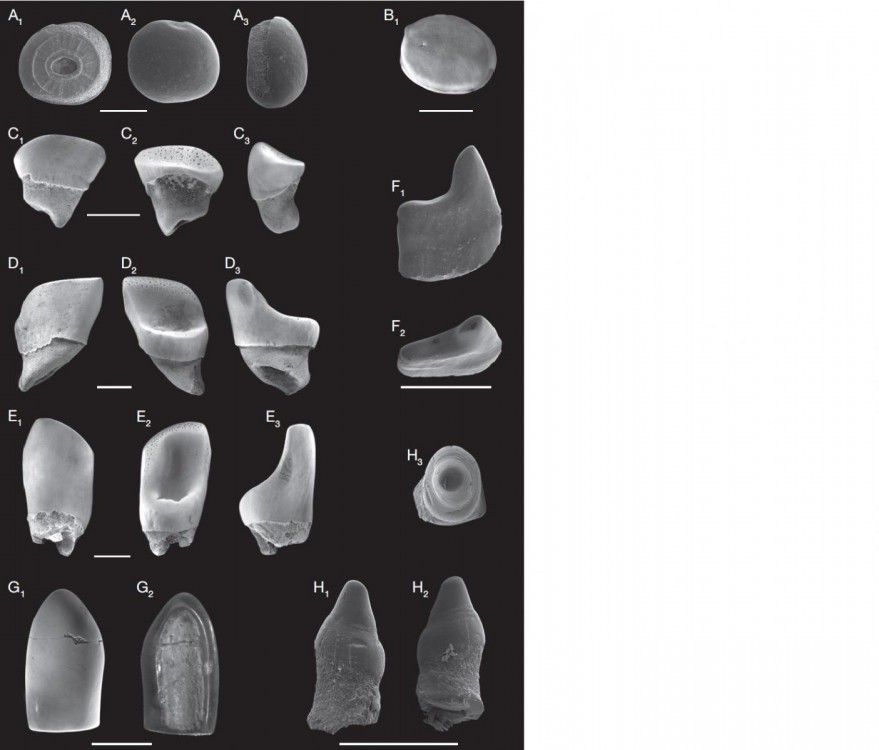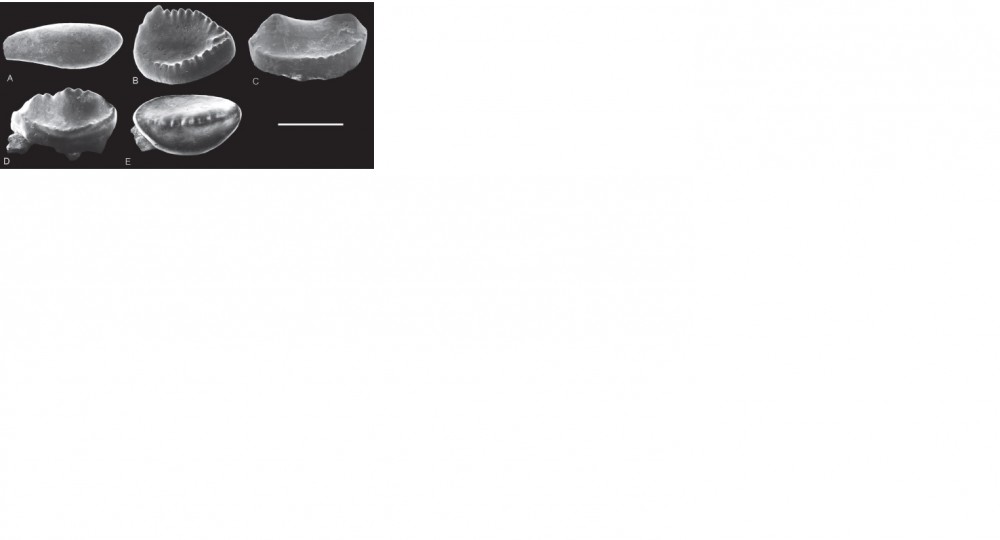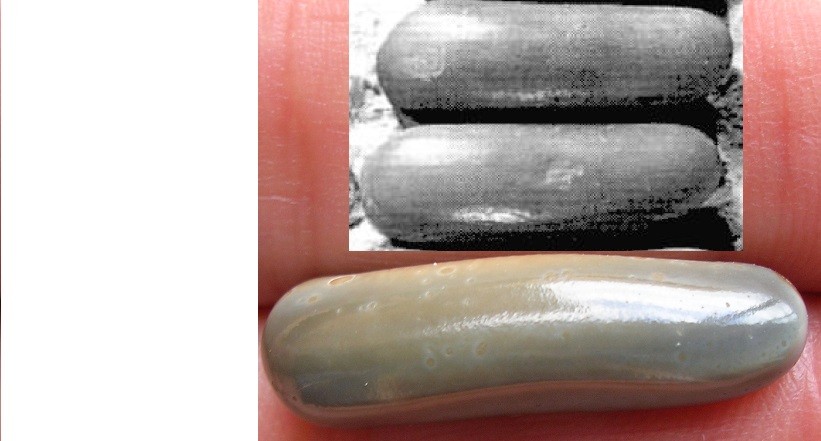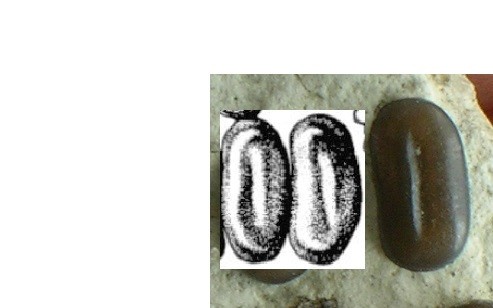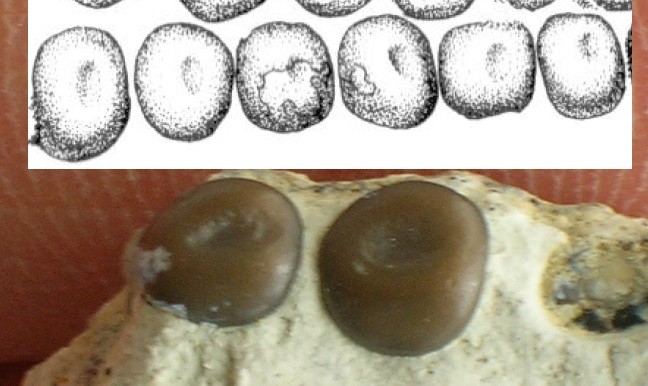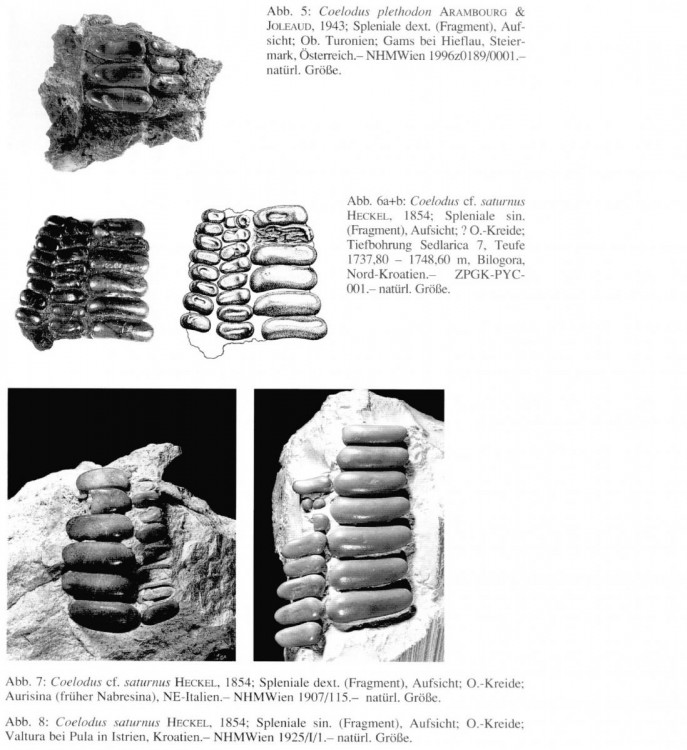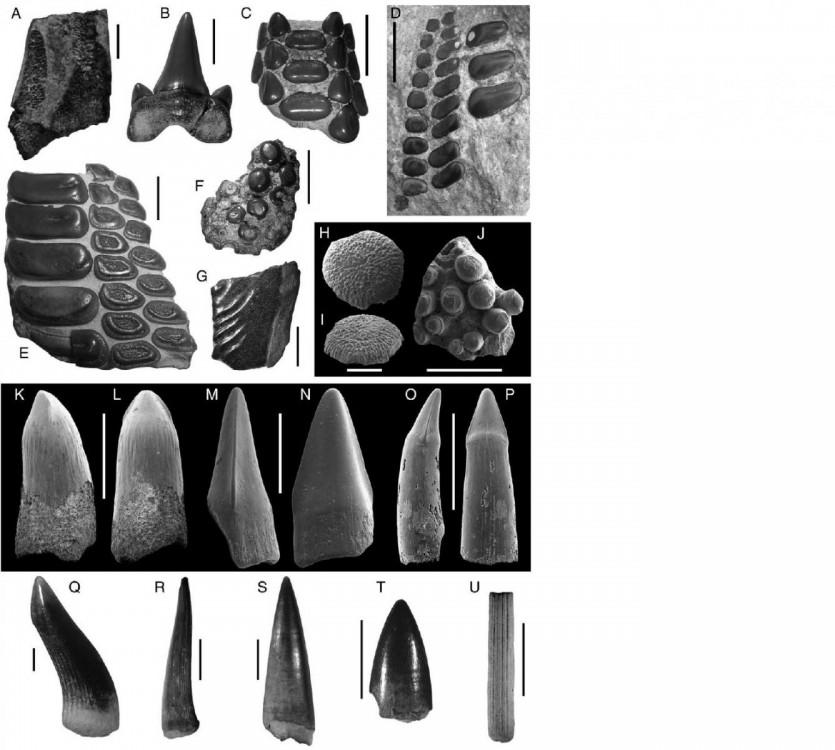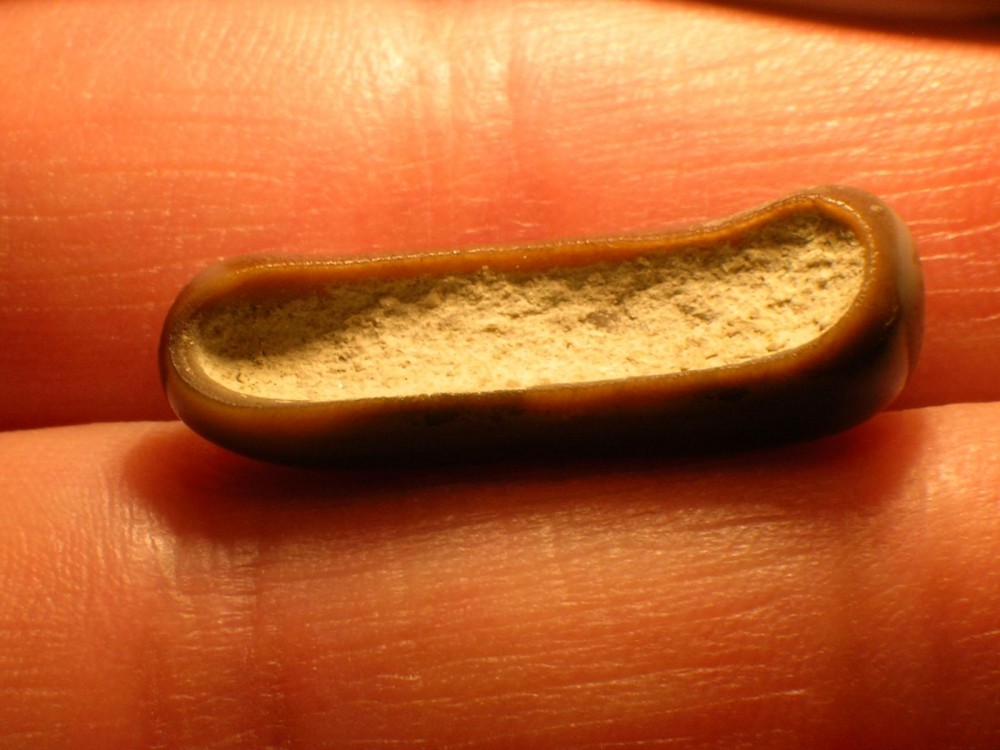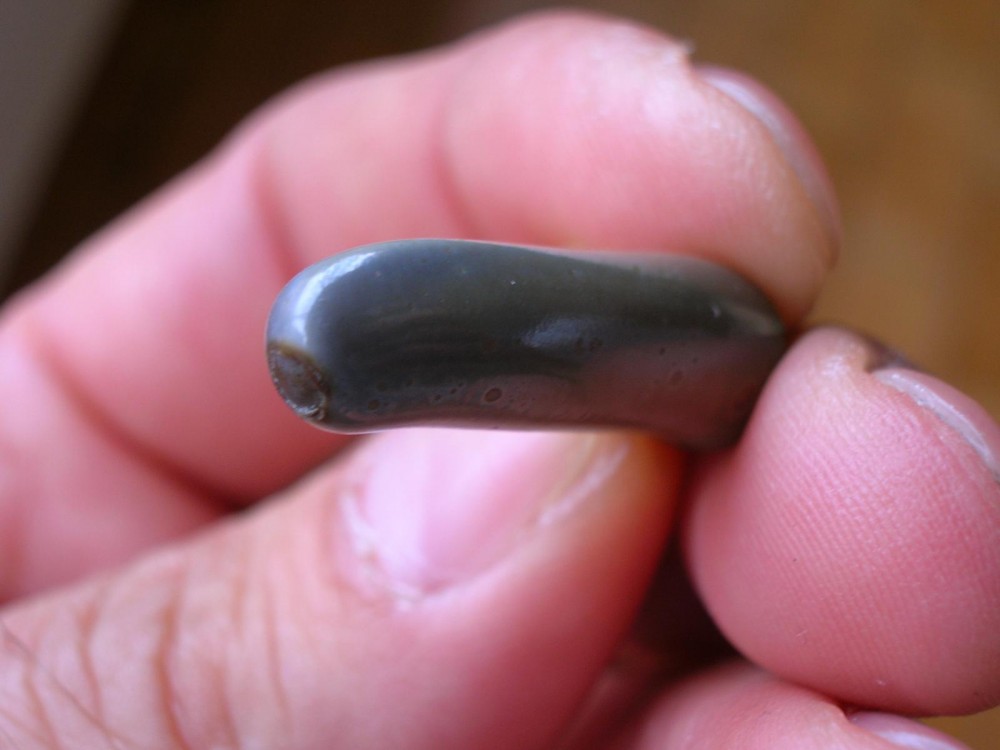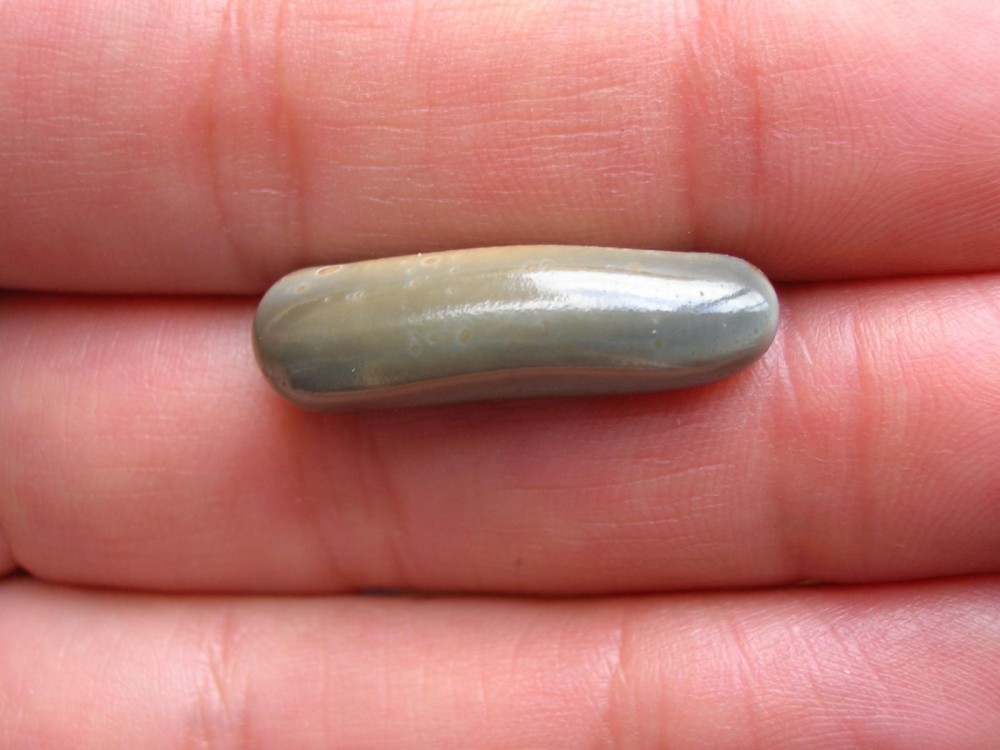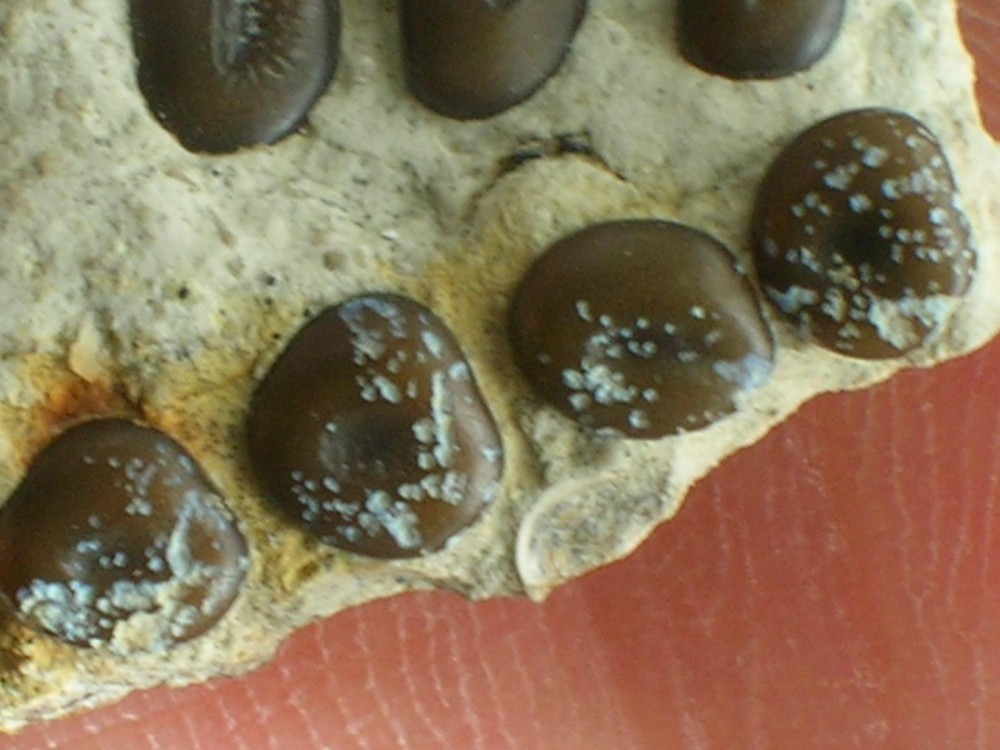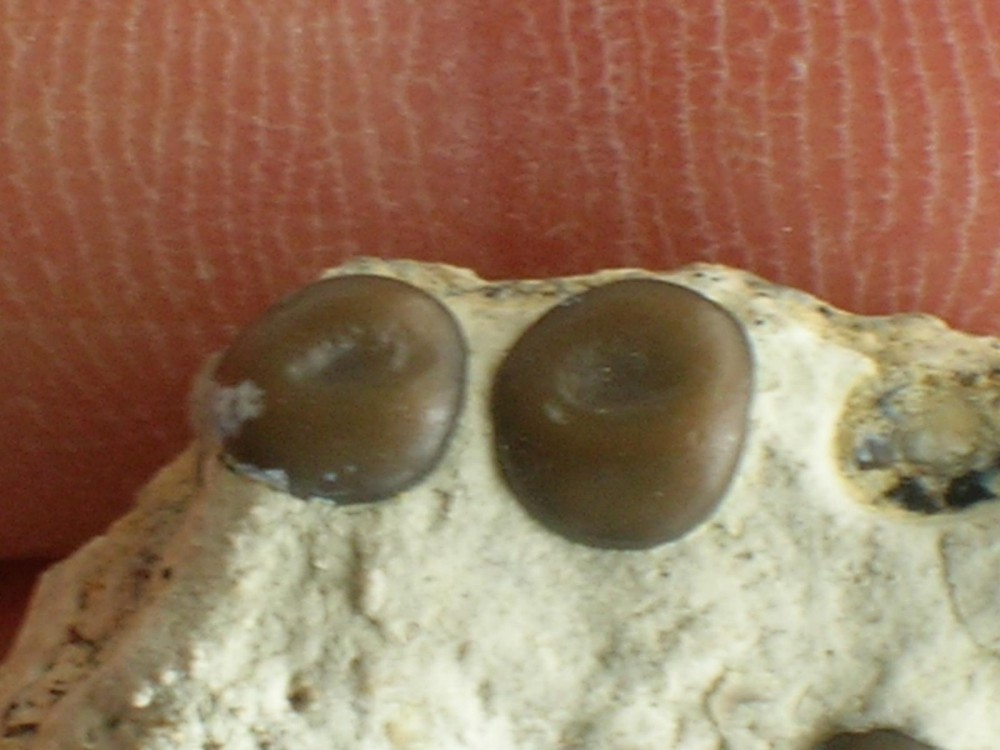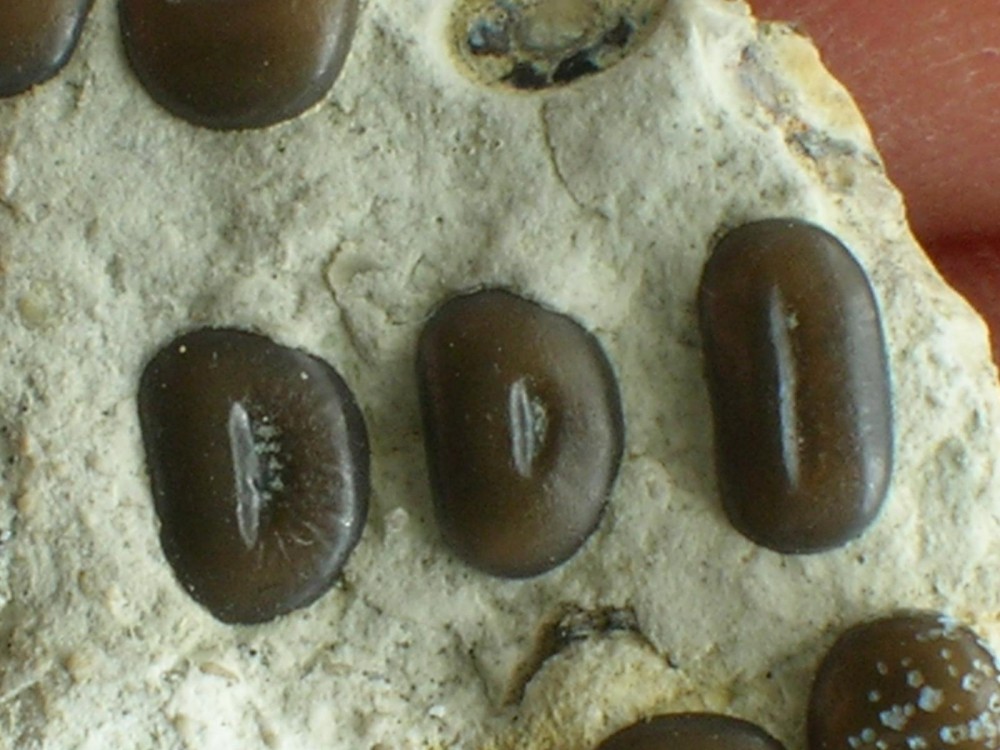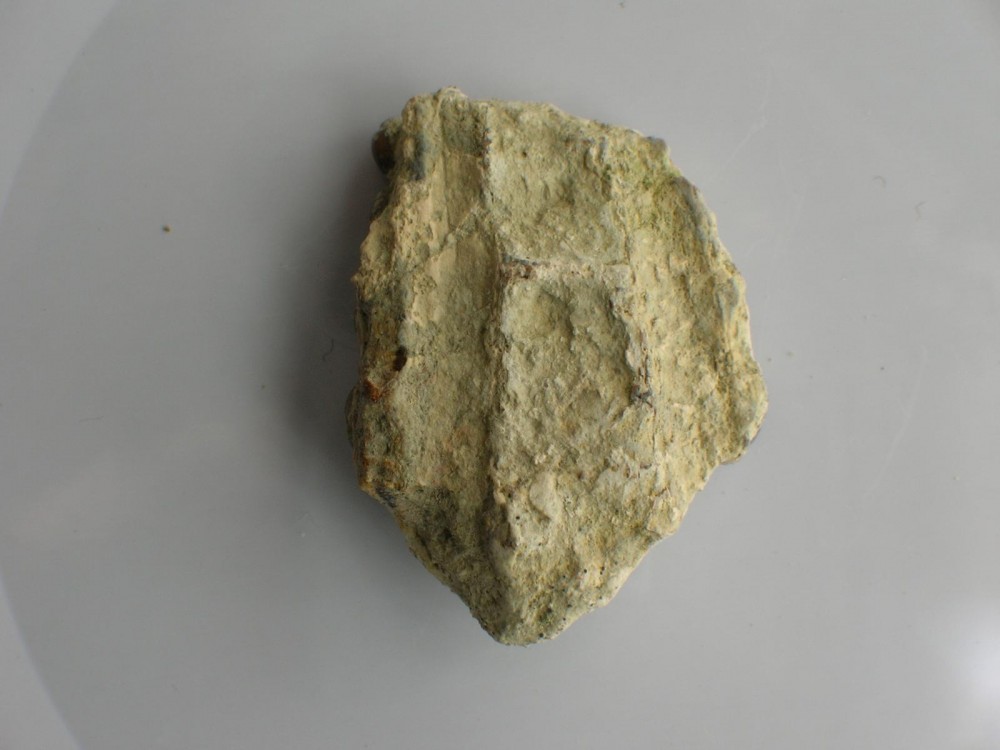A, B, Pycnodontiformes indet., molariform teeth EHUEP Q7 in basal (A1), occlusal (A2) and lateral (A3) views and EHUEP Q8 in occlusal (B1) view; C-E, Pycnodontoidea indet., incisiform teeth EHUEP Q14, Q16, Q15 in labial (1), lingual (2) and mesiodistal (3) views; F, Pycnodontoidea indet., branchial tooth EHUEP Q20 in lateral (F1) and apical (F2) views; G, cf. Anomoedus sp., molariform tooth EHUEP Q23 in occlusal (G1) and basal (G2) views; H, cf. Amiidae indet., conic-styliform tooth EHUEP Q26 in mesiodistal (H1), (H2) and occlusal (H3) views. Scale bars: A, H, 1 mm; B, G, 4 mm; C-F, 2 mm.
B-E, Nursallia sp. (MB. f. 7235) from a Turonian bone-bed of Delta County, Colorado, U.S.A. B: Specimen 1, anterior view. C: Specimen 2, anterior? view. D: Specimen 3, anterior view. E: Specimen 3, occlusal view. Scale bars = 0.5 mm.
Su ejemplar parece bastante erosionado.
Busque Pycnodontiformes del Eoceno, a ver si tiene suerte.





